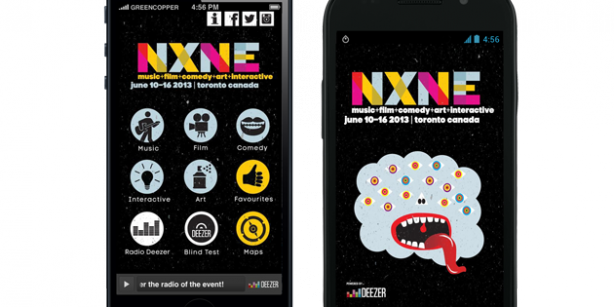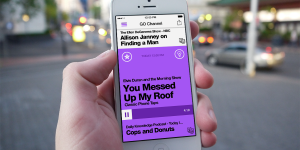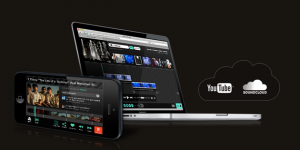 Tech
Tech
APP OF THE MONTH: NXNE's brand new festival app
by Mark Teo
June 6, 2013
At large-scale festivals, most don’t understand the importance of an app—that is, until it’s gone. It’s a ritual for anyone who’s been to SXSW, Osheaga, Canadian Music Week, or Pop Montreal: We download the app. We bitch about how terrible it is. We use it obsessively. Then, as soon as it becomes less than functional—say, by the network overload that occurs when tens of thousands of smartphones cluster in a single location—we curl up in the fetal position, hyperventilate, and swear vengeance against the developer who brought us the app in first place. Rinse, repeat.
Truth is, apps have become an integral part of the festival experience, and, if you’ve been tracking their year-over-year development, they’re becoming a lot more intuitive. Historically, the two Canadian apps that have led the way were Pop Montreal’s—which, perhaps, became the first app that truly replaced physical programs—and NXNE’s. Unsurprisingly, both apps were developed by Montreal-based Greencopper, who specialize in making sense of large, multi-faceted festivals. We spoke with their CEO, Gwenaël Le Bodic, to talk about 2013’s NXNE app, the difficulties of working with ever-changing live events, and how Greencopper’s helping fest-goers discover new music.
AUX: Tell us how Greencopper started working with NXNE.
Gwenaël Le Bodic: We specialize in software solutions for events, and we work with over 120 festival organizers worldwide. Some of the big ones are the Montreal Jazz Festival, Osheaga, Nuit Blanche, Francofolie, Winnipeg Folk Festival—those are some of the big ones in Canada. We have a partnership with Deezer, which is a streaming service, and in Canada, they’re working with a number of festivals. NXNE is one of them. Deezer sponsors these types of apps, and they’re becoming event guides. They’re increasingly becoming the preferred platform for festival-goers.
What kind of features did NXNE ask for?
The first thing is that they wanted it on two platforms: iPhone and Android. It’ll have a full integration [with] music, film, comedy, interactive, and art, and it’s structured to display huge amounts of content split into different categories. People will be able to make personal agendas using the app, and there will be a radio widget on the app that allows you to listen to streams directly from the app. So you can put the mobile app in background mode, while you do other things on your phone.
HAILO, a Toronto taxi company, has also sponsored the map portion of the app, and of course, there will be push notifications for events and you’ll have access to social media directly from the app. There will also be biographies of every band on the app, and the top tracks will be made available. Deezer subscribers will also have full access to music from participating artists.
That sounds really comprehensive.
It is. It’s a complex event, in terms of schedule and lineup, and for us, it’s an interesting event that showcases what we have to offer. It’s a carefully crafted mobile app.
What makes for a successful festival app? Did you lean on other festival apps as a precedent to NXNE?
It has to be really intuitive. Last year, we developed a lot of festival apps, so we learned a lot from that experience. Pop Montreal, Jazz Montreal, and Osheaga were the three apps in our portfolio we looked closely at. [In terms of] measuring the success of these projects, user rating are really important. We need to make it really simple to use, even if the structure of these festivals is complex.
The festival does have a lot of moving parts. What was the biggest challenge your team faced in developing the app?
There’s a huge amount of information and data involved, and we don’t expect the festival organizers to have time to manually enter that into our systems. So we [set up] a live connection to their database. Another important aspect was making sure our apps work completely offline. That’s important, because at a lot of festivals, there are lots of people meeting at the same time and the same place. And for the people coming from the States, they can fly in, and use the app while in airplane mode. They have to switch off their streaming radio, but they have access to the entire content of the app—everything is cached.
But immediately, it can update as soon as there’s connectivity to cell or wi-fi networks, and that mechanism is quite interesting for us. Working offline—but still having very regular updates—was key for us, because such large events change all the time, and we need to reflect that in real time.
Your Osheaga app had a few extra features, like a photo filter. Did you create any add-ons for NXNE’s app?
We have “Name that Tune,” which is a way to use Deezer to discover the music that’s showcased at NXNE. It’s a musical quiz, where we start to play a song, and the user has to guess which album the song’s from. You’ll have a scoring system, so you can play again and again to discover new artists in the lineup.
It’s using Deezer to find artists, which is good for the festival, because one of their missions is to make sure that people discover emerging artists. It’s going to be quite innovative for NXNE—you can discover their lineup in this way.
So, how do you cut through the noise of the app store? How do you ensure that people are actually using the app?
We put script at the top of festival websites that tells mobile users to go get the free app. Media helps, too, which is why we’re excited to do this interview. We try to push the number of downloads with things like Twitter, Facebook, and the festival website, and that helps us be highly visible in the app store in the music category.
Watch out for NXNE’s app in the app store.
This article originally appeared in the June 2013 issue of AUX Magazine. Download and subscribe for free in the App Store.
Tags: Tech, Interviews, News, App of the Month, AUX Magazine, NXNE





